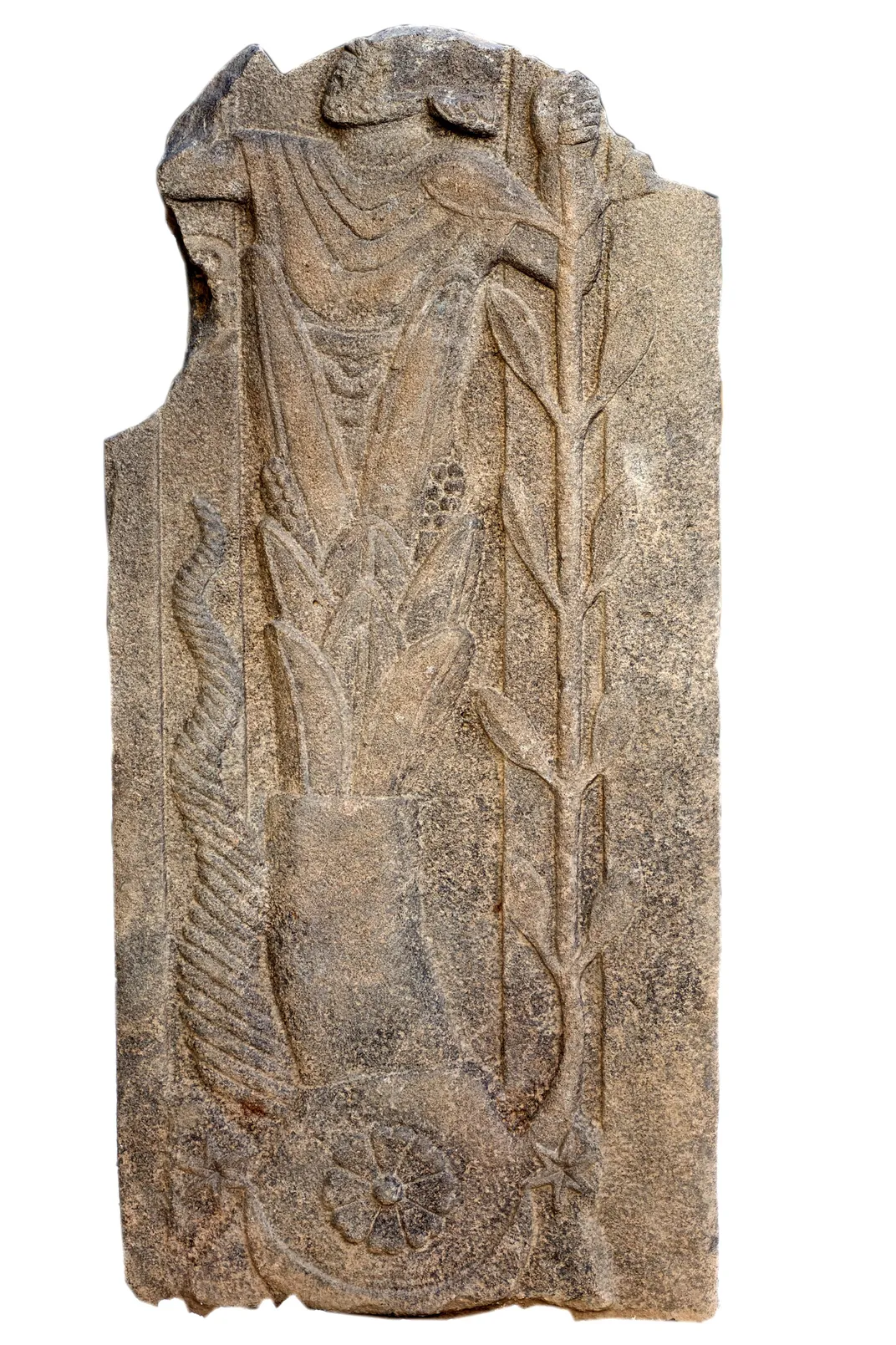Experts Have No Idea Who This Roman God Is
A recently unearthed carving combines Roman and Mesopotamian elements but may represent a god from an even earlier time
/https://tf-cmsv2-smithsonianmag-media.s3.amazonaws.com/filer/f3/65/f36524ad-0b9f-4d5f-8b47-0dbae8ff0a82/cropped_image.jpg)
About 2,000 years ago, Iron Age worshippers built a thick-walled sanctuary near the ancient city of Doliche in Southeast Turkey. Later, followers of Jupiter Dolichenus—a sort of fusion deity created from the Roman "King of the gods" Jupiter and a Baal king god—erected a temple on the same site. In the early Middle Ages, the temple was torn down and a Christian monastery of St. Solomon built in its place, reports Adam Steedman Thake for the New Historian.
Now, while excavating this long-sacred site, German archeologists have uncovered a carving of an unknown god.
The five-foot tall stele of basalt stone was hidden in a wall and used to buttress the monastery. It shows a god emerging from a "chalice of leaves," wearing a beard and grasping a tree with his right hand. The leaves arise from a cone decorated with astral symbols (a crescent, a rosette and a star) flanked by the tree and a long horn, archeologist Michael Blömer of the University of Münster says in a press statement.
"It's clearly a god, but at the moment it's difficult to say who exactly it is," Blömer told Tia Ghose at Livescience. "There are some elements reminiscent of ancient Near Eastern gods, as well, so it might be some very old god from before the Romans."
The rosette could be associated with the Mesopotamian god Ishtar and the crescent moon with the moon god Sîn, Near Eastern studies expert Nicole Brisch told Livescience. Much of the god’s face itself is missing, destroyed long ago during the progression religions that left their marks at this site. But the beard remains, indicating a Roman connection. The composition of the relief carving points to an Iron Age origin.
Ghose reports that the more than a dozen experts she contacted for her article couldn’t give a name to the faceless deity. The only chance the researchers have of putting a name on the god is if future excavations unearth a similar bearded god sprouting out of a plant.
